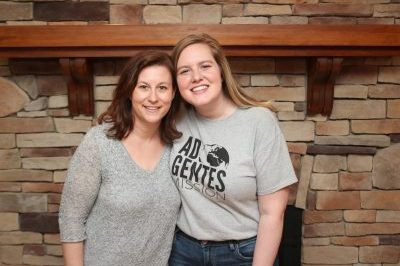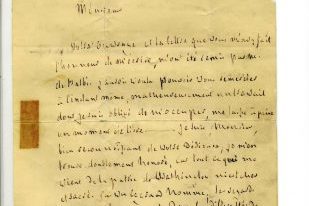For to us a child is born. A child of hair and nails and teeth; a child of shoulders and ankles and wrists and knees; a child of muscles that strained and bones that broke and cartilage that twisted and rubbed and wore and tore. A child who could, and who would, feel the pain and limitations of being human.
Limping into December with a torn meniscus in each knee (the inevitable crescendo of a body in motion for 13.1 miles in a rainy, muddy, cold half trail marathon) I’ve felt the pain of being human in an unseasonably challenging way this Advent. And I’ve been reminded, through a slow and often frustrating rehabilitation process, that our hope reaches past the symbolic and metaphoric to touch something truly incarnate.
The reminder (like Christ’s birth, you might say) hasn’t arrived under ideal circumstances. I’ve always been a fiercely independent and aggressively active person. Slowing down is not something I like to do. When I’m not working, there’s a good chance I’m trying to outrun Harmon Creek on the Panhandle Trail just across the river from Franciscan’s campus, or mountain biking over at Raccoon Creek in western Pennsylvania. My weekends are engineered for traveling and exploring—hiking in the fall and winter, kayaking in the summer, and red-eye flights, layovers, and rental cars to get me to my next adventure. I live at 100 miles per hour, and I’ve been blessed enough that my lifestyle has led me to see God’s creation in all its wonder, awe, and beauty.
But beneath that sense of adventure has always been an uneasy truce with my body and a gnawing sense of detachment from family and friends. A history of eating disorders, over-training, and loneliness have perpetuated my life just as much as a sense of wonder and awe, and with my recent knee injuries I’ve had to confront all those anxieties, fears, and self-doubts that still live inside me.
And, I’ve had to confront waiting.
We talk a lot about waiting during Advent—waiting for Christmas, for the Christ child, for the long-awaited hope that will bring meaning to lives that seem more muddled and confused than we can bear, or bring peace to a world that seems more chaotic and violent than ever before in human history (the barbarian is always at the door, reminds Dana Gioia). It can be tempting to contextualize our waiting in the proverbial I or me, and we’re not always wrong to do so. But waiting for our perfect conception of an event, for an event or person or achievement that gives us a false or temporary sense of salvation from an unavoidable part of being human, leaves us with nothing more than a metaphor. It also cheats us out of the awesome reality of what God’s coming into the world means.
As we approach Christ’s birth at Christmas, we should push ourselves to remember that the movements of our faith are not symbolic—they’re not reminders to be patient while we wait for something we want, or metaphors to help us make sacrifices in certain aspects of our life so we can reach a personal goal. I’m waiting for my knees to heal, but I also recognize their fundamental frailty. More importantly, I’m waiting for the very real presence of Christ and his Grace to work through me.
For me, that reminder of an incarnate faith has meant taking an intentional approach to “showing up” before God and others this December. We can do this in prayer and through the sacraments, of course, but we shouldn’t overlook what many people might consider the latent aspects of the Advent and Christmas seasons: spending time with family and friends; being present to those with whom we might struggle; giving ourselves in time, treasure, and talent to strangers for no other reason than God came among man as a man, and so should we.
There is something both comforting and challenging in that Incarnation, born out to thousands upon thousands in a specific time and place in human history. We’re comforted in knowing Christ, as a human being, can empathize with us and our temporal anxieties and pains. Yet we’re challenged in that we, in all our individualistic and stubbornness, are called to step out of ourselves and embrace a unique purpose ordained by God our Father, and to do so within the context of a specific community and specific time in our lives.
We wait, and we wait for hope. But we also wait without hope, as T.S. Eliot reminds us, because our hope “would be hope for the wrong thing.” As I continue limping my way through the rest of Advent (hopefully, with each day, a little quicker than the day before) I’m reminded that my body, like Christ’s human body, is temporary. But by his Incarnation, we’re ultimately promised a hope that transcends the symbolic, and touches eternity.








